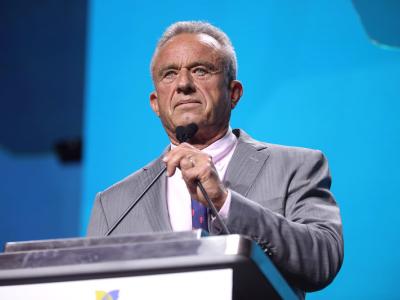Jul 3, 2012 (CIDRAP News) – The US government announced a total of $971 million in health emergency preparedness grants to states and territories yesterday, including $619 million for public health departments and $352 million for healthcare systems.
The US Department of Health and Human Services (HHS) said the Public Health Emergency Preparedness (PHEP) cooperative agreement and the Hospital Preparedness Program (HPP) grants are being awarded jointly for the first time. Officials have been working over the past year to align the two programs to improve efficiency and encourage cooperation between the nation's public health and healthcare systems, the agency said.
The $619 million in PHEP grants is up slightly from last year's $613 million, while the $352 million for the hospital program is the same as last year's amount. The grants are awarded to all 50 states, eight territories, and four of the nation's largest urban areas.
The Centers for Disease Control and Prevention (CDC) administers the PHEP grants to support the preparedness of state, local, and territorial public health systems, the HHS announcement noted. HPP grants, administered by the HHS Office of the Assistant Secretary for Preparedness and Response (ASPR), support preparedness for healthcare systems, coalitions, and organizations.
This year's list of PHEP grants includes a "base plus population" grant and a smaller Cities Readiness Initiative (CRI) grant for each state; territories do not received CRI grants. In addition, 10 states will receive grants for Level 1 chemical laboratories.
The main PHEP grants range from a little over $4 million for low-population states like Wyoming and North Dakota to $36 million for California. The total of the main grants comes to $554.8 million, while the CRI funds total $54.3 million, and the chemical lab grants come to $10.3 million.
Like the PHEP grants, the HPP grants are population-based; they range from less than $2 million for small states like Vermont and Delaware to more than $28 million for California.
The two grant programs were launched in the wake of the terrorist attacks of 2001. Although the total funding is holding steady this year, the general trend has been downward in recent years. For example, in 2010 the PHEP total was $698 million and the HPP amount was $390.5 million.
The HHS statement said that as part of a general effort to improve coordination among federal emergency preparedness programs, the CDC, ASPR, and other agencies began working in December 2010 to better align grants with public health and healthcare preparedness components.
"The integration fostered by HPP and PHEP alignment is important in streamlining and strengthening the day-to-day relationships and cross-sector cooperation that are critical to achieving a resilient health system ready to face any health hazard and capable of providing the affordable, high-quality daily care that all Americans deserve," Nicole Lurie, MD, MSPH, HHS assistant secretary for preparedness and response, said in the HHS release.
Officials said the two programs support complementary preparedness capabilities and performance measures; use the same processes for grant administration, technical assistance and data management; have common reporting requirements; and have compatible information technology systems.
HHS said the alignment has resulted in several changes for the 2012 HPP-PHEP grant cycle: a single HPP-PHEP funding opportunity announcement, funding application, and grant award, along with a single grants administration agency, the CDC's Procurement and Grants Office. Also, there will be an aligned HPP-PHEP grant cycle beginning each Jul 1 and ending on Jun 30 of the following year.
However, HPP and PHEP will remain separate programs with separate budgets, in line with authorizing legislation, HHS said.
The alignment of the two programs drew applause today from at least two public health groups: the Association of State and Territorial Health Officials (ASTHO) and the Trust for America's Health (TFAH). In ASTHO's case, though, the praise was coupled with concern about future funding.
ASTHO Executive Director Paul Jarris, MD, MBA, said he is grateful to Lurie and Ali Khan, MD, MPH, director of public health preparedness and response at the CDC, for leading the effort to align the two programs.
"They had to be relentless to make this happen," Jarris said. "Getting two parts of the government to work together is an unnatural act. We're very happy that they saw the need and were able to actually get it started this year. . . . This was clearly a heavy lift by Dr. Khan and Dr. Lurie."
He said the alignment effort could be a model for other government programs that have related goals, such as some programs of HHS and the Department of Homeland Security. The result, he said, is that "at the state and local level you have more of a seamless system."
Gerrit Bakker, ASTHO's senior director for preparedness, said the PHEP-HPP program alignment will mean less work for state and local health officials in applying for grants and reporting on how the money is used.
As an example of the changes, he said, "The capabilities are lined up so that if states are required to produce something in an area like [hospital] surge capacity, the requirements from ASPR for the surge capacity area are the same as those from CDC."
However, Jarris cautioned that the program alignment should not be seen as a justification for cutting funding for state and local preparedness.
He said states have already been working to align the PHEP and HPP programs for several years as part of their efforts to cope with declining grants: "There's been a 30% cut in the combined programs since their peak in 2008. States have been working to reduce redundancies and de-duplicate programs over that period of time."
"It would be unrealistic to assume that this alignment will allow cuts in the budget," Jarris added. "We're very concerned that the president's budget includes a cut of $125 million or 33% in hospital preparedness for 2013. We absolutely do not believe that program alignment will justify such a thing.
"The states are being called on to do more than ever now, whether it's the fires going on in Colorado . . . or the state of emergency here in DC. The demands are increasing at a time that federal budgets are decreasing."
Concerning the funding trend, Nicole Kunko, ASTHO's chief of public policy, said the combined funding for PHEP and HPP in 2005 was $1.372 billion, which included the money spent on administration at the federal level. The corresponding figure this year is $1.021 billion, she said.
The program alignment also drew praise from Jeff Levi, PhD, executive director of TFAH, a nonprofit public health advocacy group based in Washington, DC.
"This is a great step toward improving the efficiency of the country’s public health preparedness system," Levi said in a statement. He commented that the two programs have been the "backbone" of supporting state and local preparedness efforts for the past decade, but neither program has achieved its full potential.
Bringing the programs together "should create synergies and make it easier for public health officials to do their jobs," Levi said.
"Until this announcement, the grant processes have been separate, leading to confusion and inefficiencies for grantees and the federal government," he added. He said the alignment should simplify processes and improve efficiency.
See also:
Jul 2 HHS release
Jul 3 TFAH statement on alignment of PHEP and HPP grants















